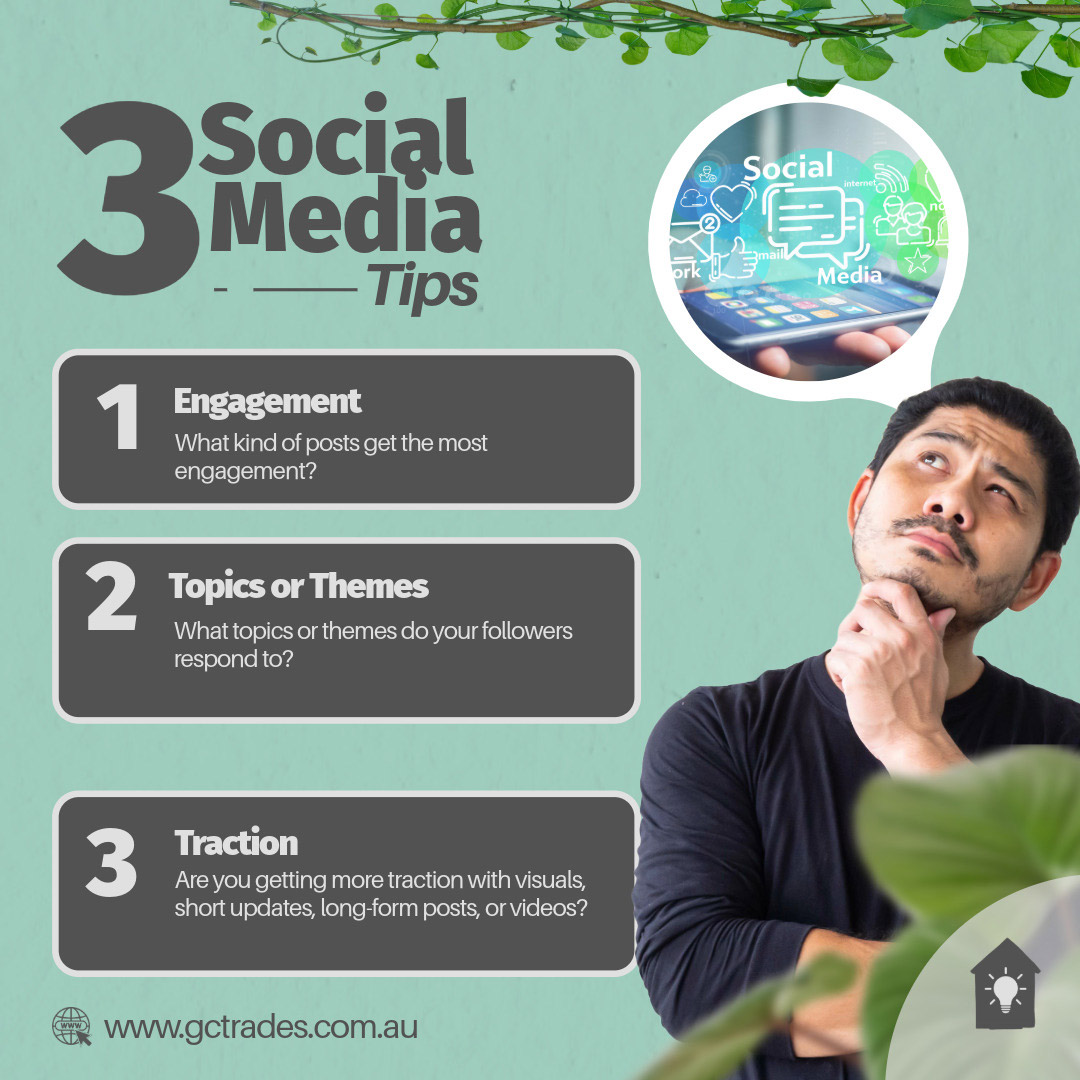
Plumber vs Electrician SEO
- Oct 24 2025
- /
- 228

Running a business on your own means wearing a lot of hats.
When it comes to social media, you're not just the face of your brand, you're also the content creator, community manager, strategist, and data analyst all in one.
For sole traders, social media may feel overwhelming, especially when you're trying to compete in a space dominated by businesses with full marketing teams.
With the correct strategy, you can build a strong and consistent presence across multiple platforms without burning out. Whether you're already thriving on Twitter (x) or just beginning to explore other platforms like Instagram, LinkedIn, or Tiktok, let's help you develop a smart and sustainable approach to managing online presence solo!
Before diving into new platforms, take a moment to assess what's already working for you. Whether you've gained traction on Twitter, Instagram, Facebook, or LinkedIn, your current main platform offers valuable insights into your audience, your voice, and your content style!
Look at your existing social media activity and ask yourself these questions:

This is your starting point. You have content that resonates, not it's time to use it as a blueprint.
Instead of reinventing the wheel for every new platform, repurpose your top-performing content ina way that fits each channel:
The key here is to maintain consistency in your message and brand voice while tailoring your format to match the expectations of each platform.
As a one-person team, efficiency matters.
Leaning into what's already proven successful saves time, builds confidence, and ensures that you're not starting from zero when expanding your presence.
Time and energy can be limited, so spreading yourself too thin across every social media platform isn't just exhausting - it's counterproductive.
The key is to focus on the platforms that align with your goals, your audience, and the type of content you actually enjoy creating.
Rather than jumping on every trend, choose 2-3 platforms where your ideal customers are active and where your content style can thrive.
| Platform | Ideal | Strategies |
|---|---|---|
| For visual brands, creators, and product-based businesses that can benefit from showcasing photos, short videos, and Stories to build a personal connection. | Use Reels (short-form videos) to highlight information, Instagram carousels for step-by-step guides or storytelling, and Instagram Stories for casual check-ins or Q & A. | |
| Twitter (X) | For thought leadership, real-time updates, quick updates, and engaging in niche communities. | Engage with relevant hashtags or trending conversations. |
| For service providers, consultants, and businesses seeking thought leadership, client case studies, and professional storytelling. | Share client success stories, personal business lessons, or industry commentary. | |
| For community engagement and local business promotions that can benefit for running events, creating groups, and sharing longer updates. | Share customer testimonials, promote events, and use Facebook Groups to build a loyal community around your niche. | |
| TikTok | For brands with a fun, creative, and educational side for storytelling, tutorials, and short-form content. | Use trending audios, templates, or formats to share business tips, customer journeys, or mini-tutorials. |
| For driving traffic to blogs, websites, or eCommerce stores, especially in lifestyle, fashion, and design niches. | Create evergreen content that answers your audience's aesthetics. |
Don't pressure yourself to master every platform at once. Start by adding one new platform at a time, get comfortable with its format, then consider layering in another as you grow.
Quality beats quantity, especially when you're managing it all yourself.
With the right systems, you can stay consistent without being constantly online. It's all about planning, batching your content, and working smarter, not harder.
You don't need a fancy system, just a basic calendar or spreadsheet where you can map out:
Start with content pillars that reflect your brand values and audience interests. For example:
Plan 1-2 posts per week per platform, depending on your capacity. Consistency beats frequency every time!
Instead of creating and posting daily, try batching:
This gives you breathing room and prevents social media from taking over your day.
Don't reinvent the wheel each week. One post can often be turned into several:
When in doubt, recycle high-performing content. Most of your audience won't notice, and those who do likely won't mind.
You don't have to be online all day to be effective. Instead:
First of all, define what success looks like to you.
Forget vanity metrics like follower count (unless growth is your specific goal). Instead, focus on metrics that align with your business objectives, such as:
Decide what matters most: visibility, credibility, conversions, or community.
At the end of each month, take a moment to review and ask yourself:
Remember, your strategy doesn't need to be perfect—it just needs to evolve. Social media is about testing, learning, and growing with your audience.
Being a sole trader doesn't mean you have to do everything or be everywhere—it means being smart, strategic, and intentional with your time and energy. Social media can absolutely work for you, even when you're the only one behind the screen.
Start with the platform you know, choose the right channels to grow into, and create content that plays to your strengths. Plan ahead, repurpose often, and check in regularly to see what's resonating. The goal isn't perfection—it's progress and connection!










Electricians home automation air conditioning data security Brisbane.
Electrical Brisbane